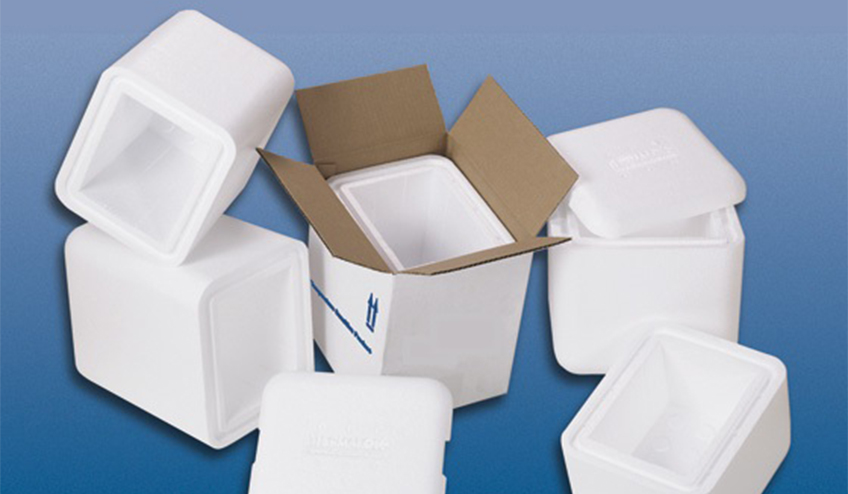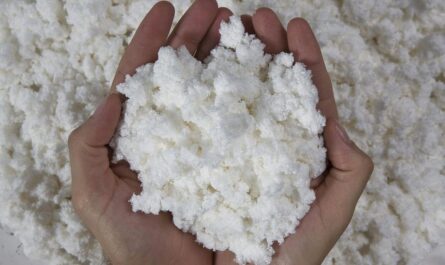Introduction to Cold Chain Packaging
Cold chain packaging refers to specialized packaging used for transporting temperature-sensitive products such as pharmaceuticals, chemicals, and perishable food items in a temperature-controlled cold chain supply system. Maintaining an unbroken cold chain during transportation and storage is critical for preserving the quality and safety of these products. Cold chain packaging helps regulate temperature fluctuations and acts as a buffer between the product and external environmental conditions.
Materials Used for Cold Chain Packaging
A wide variety of materials are used in Cold Chain Packaging depending on the specific product and operational requirements. Some common ones include:
Insulated Containers and Boxes: Made from foam insulation materials like polystyrene and polyurethane, these containers can maintain precise temperatures for 1-5 days. Various types include small drug shipment boxes, larger sea freight containers, and refrigerated trucks.
Phase Change Materials (PCMs): Specialty formulations incorporating salts or wax-based materials that absorb and release heat at specific temperatures, acting as a thermal mass. PCMs are incorporated into insulated packaging panels and liners.
Gel Packs: Flexible gel packs with PCMs that can be squeezed into any shape or reused. Ideal for small volume shipments.
Refrigerants: Common types are dry ice, ice packs, and frozen gel packs that release cold through sublimation or melting. Needs to be supplemented with insulation.
Vapor Corrosion Inhibitors: Provide protection from moisture and humidity inside sealed insulated shippers.
RFID Tags and Data Loggers: Used for real-time temperature monitoring and tracking of shipments. Help meet regulatory compliance.
Design Parameters for Cold Chain Packaging
Various packaging design parameters need consideration to achieve optimal temperature control:
Insulation Thickness: Depends on product thermal properties, duration of shipment, and temperature differential. Thicker insulation generally provides longer hold times.
Weight and Size: Should be optimized to reduce transportation costs without compromising on performance. Lightweight composite materials gaining popularity.
Temperature Indication: Packaging incorporates temperature monitors and alerts to ensure temperature compliance is maintained throughout transit.
Durability: Must withstand handling stress during multi-modal transportation without breaking insulation integrity.
Reusability: Reusable systems help reduce waste but need to factor in cleaning and maintenance costs.
Cold Chain Logistics and Packaging Performance Testing
Proper packaging is essential but only part of the cold chain that includes temperature-controlled warehousing and transportation logistics. Packaging is tested using:
Thermal Bridging Tests: Ensures no localized heat ingress points that could compromise temperature uniformity inside.
Temperature Mapping: Checks for even temperature distribution when loaded with heat sources/sinks similar to actual contents.
Transit Simulation: Subjecting filled packaging to vibration, compression, and temperature exposures similar to anticipated distribution cycles.
Accelerated Ageing: Speeds up real-world aging to understand long-term insulation performance impact.
Regulatory Compliance Testing: Meets ISTA, ASTM, IATA, TAPA, and other industry standards for transportation approval.
Real-time Monitoring: GPS and sensor tech providing in-transit temperature/condition mapping for system validation.
With optimized packaging design, quality materials, proper logistics planning and regulatory compliance testing – manufacturers can dependably transport temperature sensitive goods and gain a competitive advantage in global markets with cold chain solutions.
Advances in Cold Chain Packaging Technology
New packaging technologies are emerging to provide improved performance, sustainability and reduce costs:
Active Systems: Packaging integrated with Peltier devices, circulating fluids or phase change slurries to regulate cargo temperature without relying on external refrigerants. Eldan’s Cellbox is an example.
Biodegradable Insulation: Natural fiber-based or agricultural waste-derived materials offer greener alternatives to petrochemical foams losing structural integrity over shorter durations.
Composite Insulation: Fiber-reinforced resin matrix composites and vacuum insulated panels provide high R-value in minimal thickness.
Intelligent Sensors: Bluetooth/5G enabled loggers and tags providing real-time condition monitoring eliminate need for post-shipment data downloads.
Additive Manufacturing: 3D printing customized insulation inserts, padding or even whole containers on-demand based on precise shipment specifications.
Blockchain Enabled Tracking: Supply chain transparency and enhanced traceability of temperature compliant shipments through distributed ledger technology.
As product quality and safety mandates tighten worldwide, cold chain packaging innovations will play a critical role in facilitating global trade of perishable and pharmaceutical goods. With technology advances reducing costs and environmental impact of thermal protection – cold chains can become more accessible worldwide.
*Note:
1. Source: Coherent Market Insights, Public sources, Desk research
2. We have leveraged AI tools to mine information and compile it




